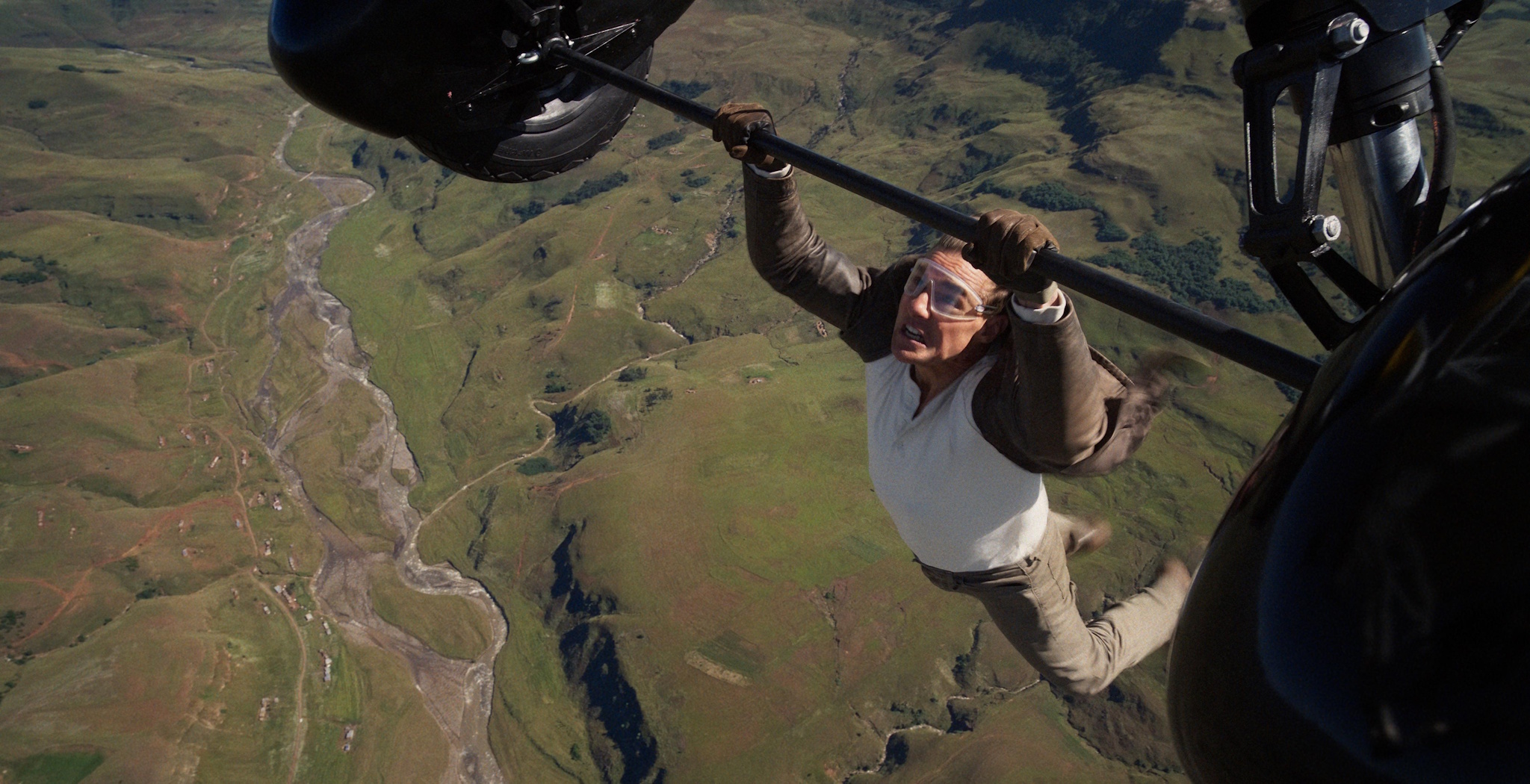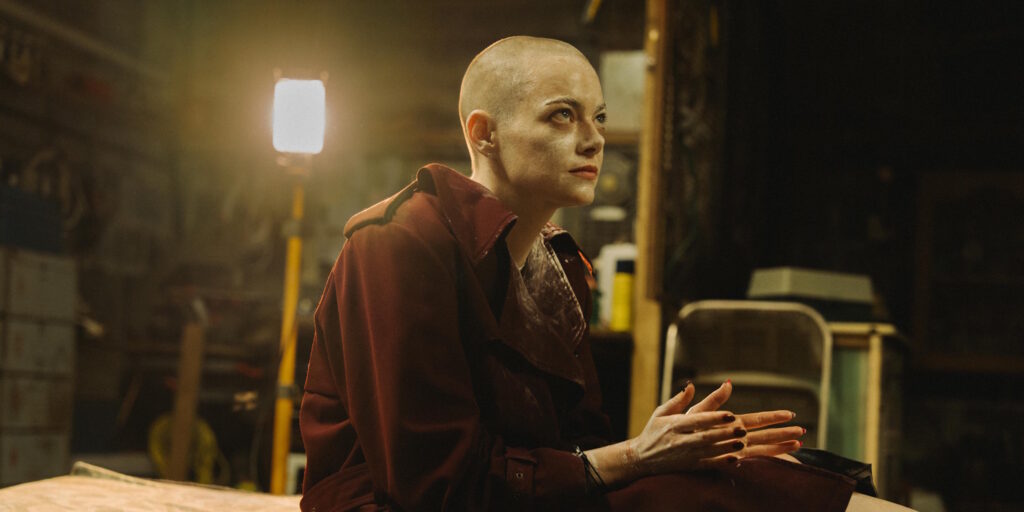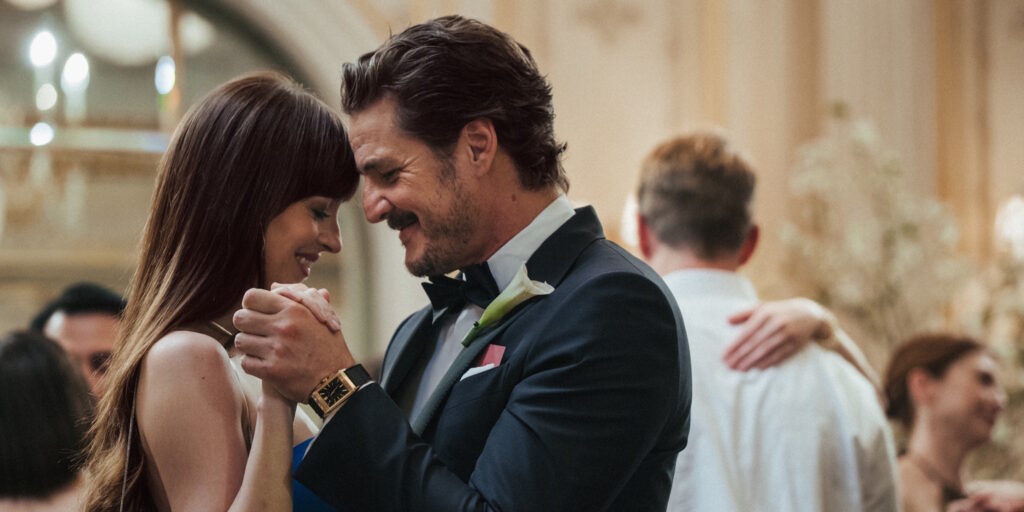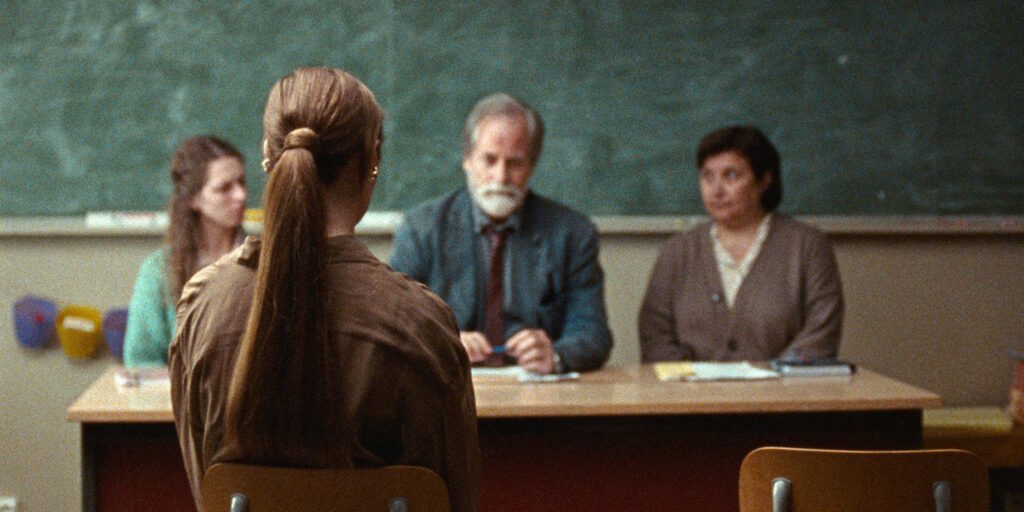“I’m asking you to trust me, one last time.” In the latest and perhaps final Mission: Impossible feature, veteran super-spy Ethan Hunt (Tom Cruise) makes this earnest plea to CIA-director-turned-President Erika Sloane (Angela Bassett) as the world trembles on the brink of an AI-engineered nuclear apocalypse. Sloane has some reason for skepticism – Ethan and his Impossible Mission Force (IMF) buddies have a habit of going rogue as often as ordinary people get haircuts – but Cruise’s hyper-capable, unkillable action hero stands firm on both his results-oriented record and his singular aura of utter conviction. He’s already averted one or two global Armageddons at this point in the franchise’s history, after all; he’s probably earned the benefit of the doubt.
Of course, Cruise is speaking as much to us, the viewers, as he is to Bassett’s steely, alternate-universe president. (The M:I timeline being apparently more progressive than our own, or at least more willing to allow a Black woman drone-strike her way into the history books.) After almost 30 years of high-tech neo-imperial escapism and death-wish stunt one-upmanship, America’s Last Movie Star is imploring his audience to follow him into the Elysian Fields of cinematic immortality. Ostensibly, Mission: Impossible – The Final Reckoning is intended to close out the story that began with 2023’s Dead Reckoning Part One – confusing subtitle change notwithstanding – and rectifying its predecessor’s sin of only making back twice its budget. In a larger sense, however, Ethan Hunt’s (alleged) last mission is all about validating Cruise and writer-director-co-auteur Christopher McQuarrie’s messianic mission to save the movies from themselves.
Whether The Final Reckoning satisfies Cruise’s delectably deranged need to risk his now-62-year-old neck for our amusement – let alone whether it justifies Paramount Pictures and Skydance Productions setting fire to 400 million dollars – is essentially academic at this point. Mission: Impossible has always been Hollywood’s slickest blockbuster fantasy, a breathless and pointedly apolitical wet dream of American competence in the face of an ever-shifting Byzantine global order. (Such a notion has certainly never felt more fantastic than it does in 2025.) This was the case even as the franchise’s earlier installments passed through a succession of capable hands, from De Palma to Woo to Abrams to Bird. In McQuarrie, however, Cruise found his artistic soulmate and most loyal co-conspirator, one who is eager to privilege nail-biting, movie-magic spectacle over all other concerns. He’s also a director who understands that the franchise’s most indelible moving image is simply its leading man sprinting like a bat out of hell.
Following the events of Dead Reckoning, the malevolent, distributed AI consciousness known as the Entity has only tightened its digital stranglehold on the world. The internet is awash in algorithmic disinformation, anti-human doomsday fanaticism is accelerating, and governments are predictably responding to the situation with authoritarian overreach and itchy-finger paranoia. The only ace up humanity’s sleeve is the ornate key that Ethan Hunt and his IMF inner circle – technological wizard Luther (Ving Rhames), anxious operative Benji (Simon Pegg), and newly recruited pickpocket Grace (Hayley Atwell) – wrested from the Entity’s erstwhile lieutenant Gabriel (Esai Morales) at the climax of the previous film. As an ailing Luther puts the finishing touches on a fancy thumb drive loaded with an AI kill switch, Ethan and the others put an intricate, Hail Mary plan into motion, one that involves springing Gabriel’s not-quite-dead enforcer Paris (Pom Klementieff) from custody.
Permanently disabling the Entity requires the IMF to take the aforementioned key to a wrecked Russian nuclear submarine at the bottom of the Arctic Ocean, where a computer drive containing the AI’s source code rests a mile under the ice. (And that’s just the first step, mind you …) Meanwhile, the Entity is brute-force hacking its way into the defense systems of every nuclear-armed nation, with the apparent goal of vaporizing humanity by launching everything, everywhere, all at once. This provides the feature with its requisite ticking clock, as ICBM silos fall one by one to the digital Frankenstein’s monster and the U.S. military’s DEFCON level creeps upward. Gabriel is also in the mix: Having been cast aside by his AI overlord for his failures in the last film, he’s feeling particularly vengeful towards Ethan, and Morales leans into his character’s embittered cartoonish supervillainy with cackling relish.
Mission: Impossible has never been a narratively or thematically deep series – Brian De Palma’s 1996 original is the closest this glossy franchise has ever come to the secrets-and-lies pessimism that dominates the genre post-le Carré – but it’s always been wildly entertaining. Its commitment to building cloak-and-dagger thrills around monstrously complicated action set pieces has been apparent since Brad Bird de-cluttered its modus operandi with Ghost Protocol (2011) and McQuarrie crystallized its strengths with Rogue Nation (2015). Like Dead Reckoning, however, this latest M:I is a relatively talky entry, one that relies on a triple dose of exposition to sketch the convoluted trajectory of its plot. Not that McQuarrie presents this speechifying with anything resembling dry, procedural realism. Sweaty, shouty national-security officials spit goofy phrases like “the total annihilation of cyberspace” as cinematographer Fraser Taggert’s camera tilts, zooms, and swoops. It’s all delightfully overwrought, in a way that devotees of this series have come to expect.
However, there’s a lot of “Previously On” throat-clearing in the opening hour of this 169-minute behemoth, in a way that somewhat diminishes the effect of the first act’s otherwise thrilling escapes, chases, and obligatory bomb-defusal sequence. McQuarrie and co-scripter Erik Jendresen are palpably aware that this may be Ethan Hunt’s last mission, and as such they seem obliged to pull in tidbits from every preceding chapter. In some cases, this pays dividends, such as some clever callbacks to (and aftershocks from) De Palma’s original and J.J. Abrams’ Mission: Impossible III (2006). In others, it falls flat, as in the film’s distracting, sugar-junkie craving for highlight-reel flashbacks of Ethan’s exploits from the previous seven features.
Although nothing will ever top Alec Baldwin’s Rogue Nation IMF chief insisting with heart-attack seriousness that Ethan Hunt is the “living manifestation of destiny,” The Final Reckoning still leans heavily on purple monologues about vaguely defined notions of “fate” and “choice.” At this late point in the series, such silliness is more feature than bug – the straight-faced assertion of Ethan’s Special Boy qualities occupies roughly the same philosophical space as “Family” does in The Fast and the Furious films. In The Final Reckoning, Ethan and his team repeatedly invoke the IMF’s self-aggrandizing creed: We live and die in the shadows, for those we hold close, and for those we never meet. Cruise and his collaborators convey this sentiment with conviction, but it feels comparatively weightless in a pop-cultural year that has given us the self-sacrificial gravity of both Andor’s final season and Sandfall Interactive’s Clair Obscur: Expedition 33. (How humiliating: Out-adulted by a Star Wars show and a French riff on the Final Fantasy games.)
Still, even The Final Reckoning’s most long-winded, flashback-laden scenes set in IMF safe houses and NORAD war rooms have an undeniable momentum, and they ultimately work to tee up the nonstop action-thriller set pieces in the film’s back half, which are among the best and most intricate in the franchise. Cruise desperately clinging to the wing of a barrel-rolling biplane is the marquee stunt that has been endlessly highlighted in the film’s marketing. The sequence in question – which is actually one of three or four interweaving climactic plot threads – does not disappoint, playing as a Hell’s Angels (1930) homage in the same way that Dead Reckoning tipped its hat to The General (1926). Yet the film’s best set piece is nestled in the middle of its running time like a scrumptious action-cinema ganache: a virtually wordless, 30-minute, James Cameron-indebted sequence in which Ethan infiltrates the drowned Russian sub as it teeters on the precipice of an abyssal marine trench. That said sequence also features the most enthralling diegetic aspect-ratio switch since Xavier Dolan’s Mommy (2014) is just the cherry on top.
It’s not entirely clear if The Final Reckoning will be Ethan Hunt’s last big-screen appearance. Despite the film’s aura of retrospective conclusiveness, both star and director seem tentatively game for future outings. One wonders whether Cruise is capable of the self-awareness that Roger Moore exhibited in the wake of A View to a Kill (1985), acknowledging that he was far too long in the tooth to be playing a womanizing, death-defying secret agent. Compared to the James Bond films, M:I is a sexy but sexless affair: Cruise’s chemistry with his female co-stars, particularly Rebecca Ferguson in Rogue Nation and Fallout and Atwell in Dead Reckoning, is charming yet chaste. Accordingly, Mission: Impossible could theoretically drag on in its current form for as long as Cruise is physically capable of executing the stunts that established the franchise as the gold standard of live-action thrills. Yet this critic for one hopes that The Final Reckoning endures as Ethan Hunt’s curtain call, not because the series’ “bigger, faster, louder” ethos has perhaps reached its inevitable ceiling, but because even good things should end, preferably on a high note.
Mission: Impossible – The Final Reckoning opens in theaters everywhere on May 23, 2025.




